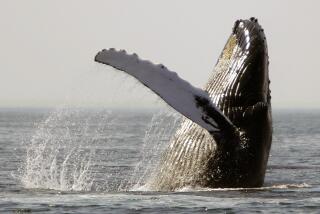Human population underlies threats to coral survival
- Share via
After three years of analysis, a team of federal scientists has come up with a list of the greatest threats to the survival of reef-building corals.
And it has ranked the proximate threats, weighing into decades of scientific debate over the biggest culprit that’s devastating coral reefs around the world.
The ranking comes with a proviso, one that raises a topic that most coral reef biologists avoid out of fear of a backlash.
“The ultimate factor for each of these proximate threats, excepting natural physical damage and changes in isolation, is growth in human population and consumption of natural resources,” reads the intro to the chart above.
That comes on page 86 of the comprehensive 581-page Status Review Report that formed the scientific basis for proposing that 66 coral species in U.S. waters should be listed as imperiled with extinction under the U.S. Endangered Species Act.
Scientists at the National Marine Fisheries Service, part of the National Oceanic and Atmospheric Administration, said they debated whether to include human population growth as an underlying factor. After reviewing the scientific literature, they decided the evidence was too overwhelming to ignore.
Chapter 3, “Threats to Coral Species” begins with the subtitle: “Human Population.”
“This chapter describes a multitude of threats or stressors that affect coral populations and contribute varying degrees of extinction risk. The common root or driver of most, possibly all, of these threats is the number of humans populating the planet and the level of human consumption of natural resources, both of which are increasing in most areas around the globe.
”The combination of increasing numbers of humans and their persistently rising per capita resources demands are directly responsible for escalating atmospheric CO2 buildup and associated impacts…”
The chapter explains in great detail how this buildup of greenhouse gas has elevated seawater temperatures, causing stressed corals to bleach; how it has advanced the spread of disease; and how it’s turning alkaline seawater more acidic -- which will eventually be corrosive to coral polyps.
Those make the top three on the list of threats. The report concludes that the more localized threats also come at human hands, including overfishing of herbivores such as parrotfish that keep algae from overgrowing corals, and stoking the reefs with nitrogen and other nutrients that benefit algae at the expense of corals, which are small colonial animals.
The report surveys population forecasts -- projections that the world will move beyond 7 billion people and will add 2 billion more by midcentury -- and that the density of people near coral reefs in parts of Asia and Africa are 4 or 5 times greater than the global average.
All of these trends, the report says, “suggest increasing risks to coral and coral reefs.”






